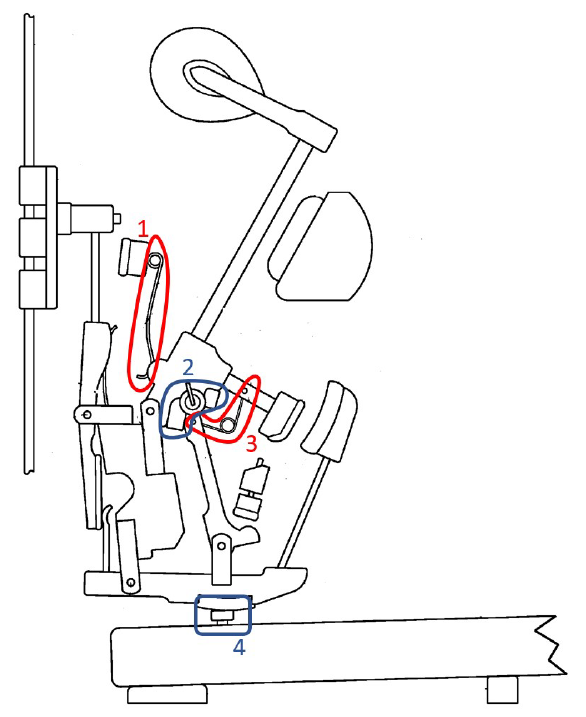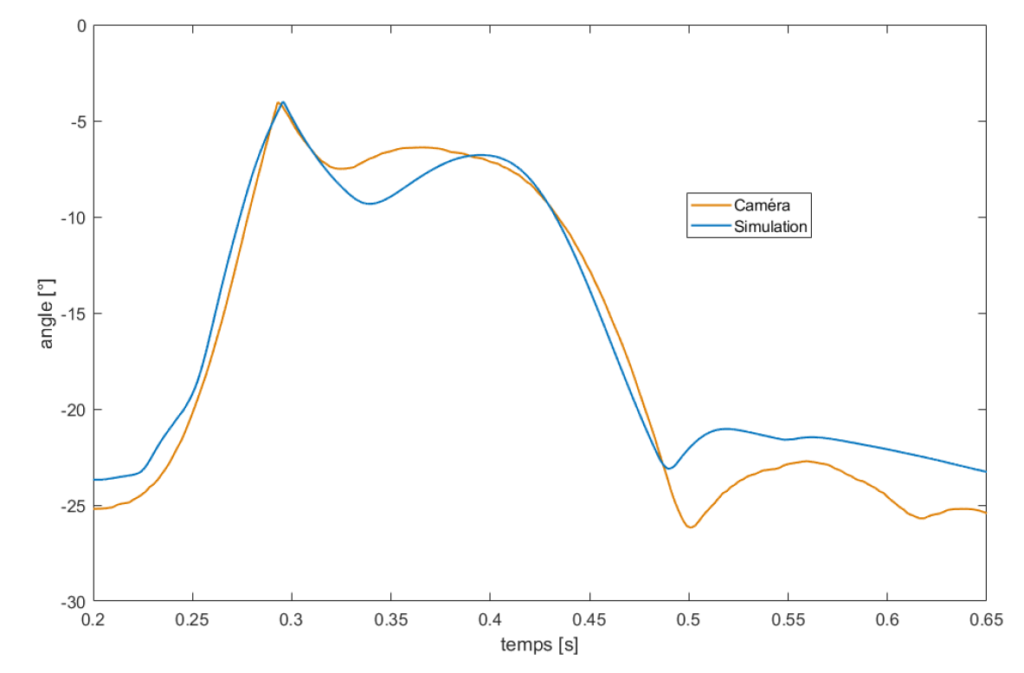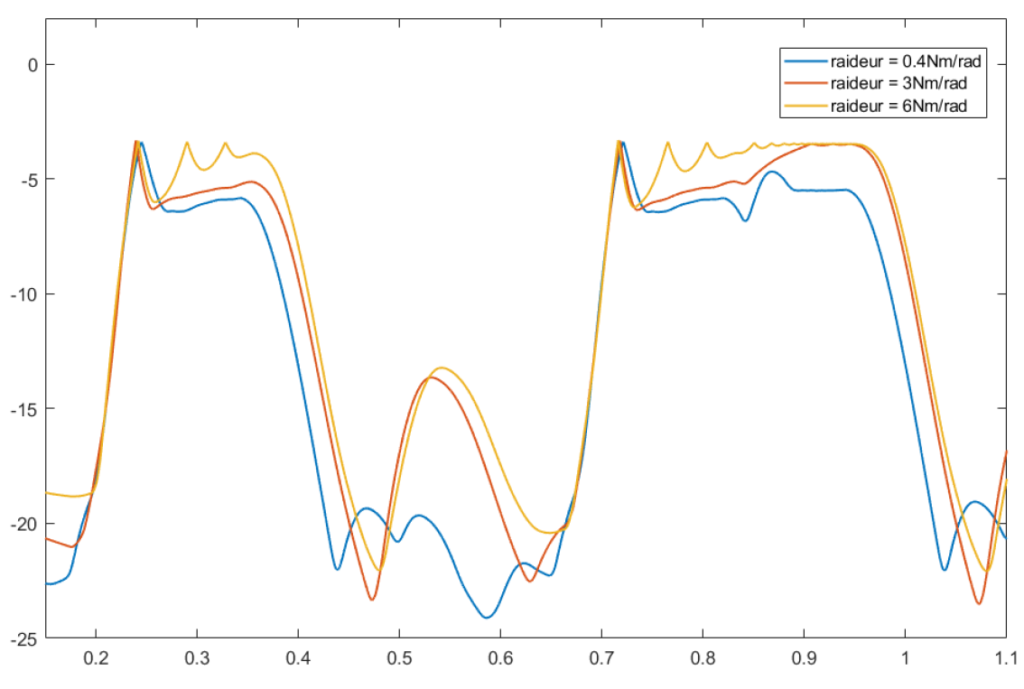
Abstract:
The mechanism that pianos use to strike the string is a relatively complex system with a large number of elements, which interact with each other in many different ways. A multibody model of one particular striking mechanisms is presented: the Fandrich piano action. More specifically, advanced simualtions are discussed, showing the interest of the multibody modeling approach for studying piano actions.
Keywords: Fandrich Piano action – Multibody Model – Mechanics
The approach is similar to the upright piano action multibody model in Robotran. The four main differences between the Fandrich and the upright piano action are shown in the next figure.

Validation performed with a high speed camera allows to compare the model results with a real demonstrator.

Then, variations of the model parameters show the influence of them. For example, the next figure show the hammer angle for a double keystroke. We modify the stiffness of the repetition spring (number 3 in the figure above) and observe the resulting hammer angle along time.

Finally, future works on this Fandrich piano action multibody model are planned: measure the repetition frequency, observe the settings influence, …
See also other experimental applications of Robotran : https://www.robotran.be/applications/labo-dyn/
Pierre Heyvaert, Sébastien Timmermans, Paul Fisette.